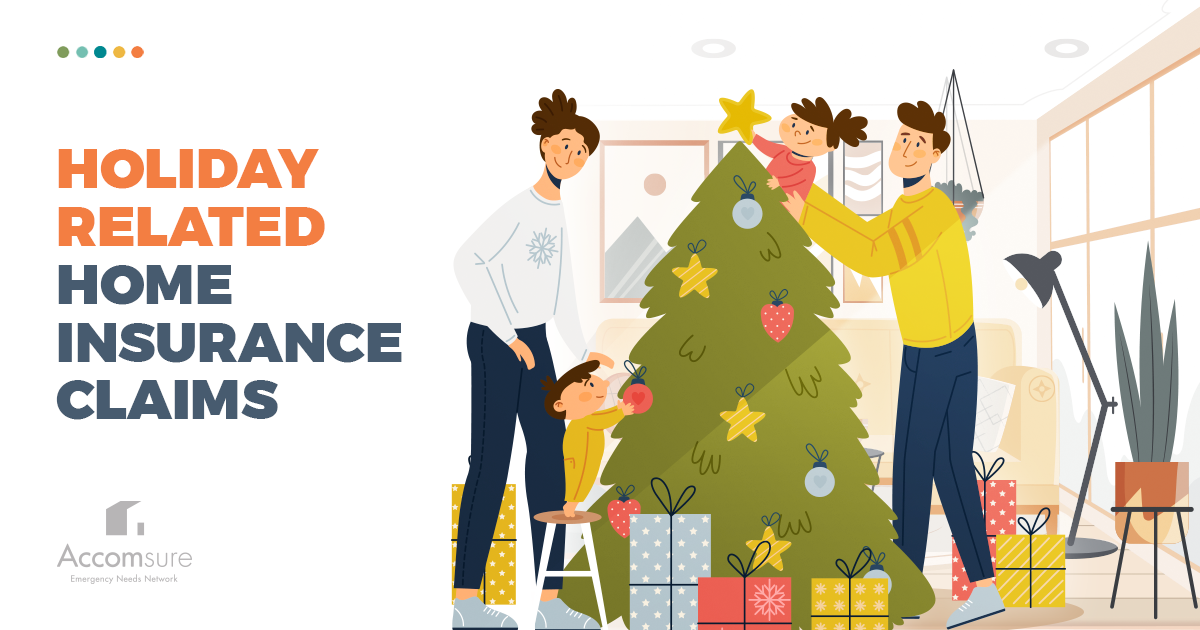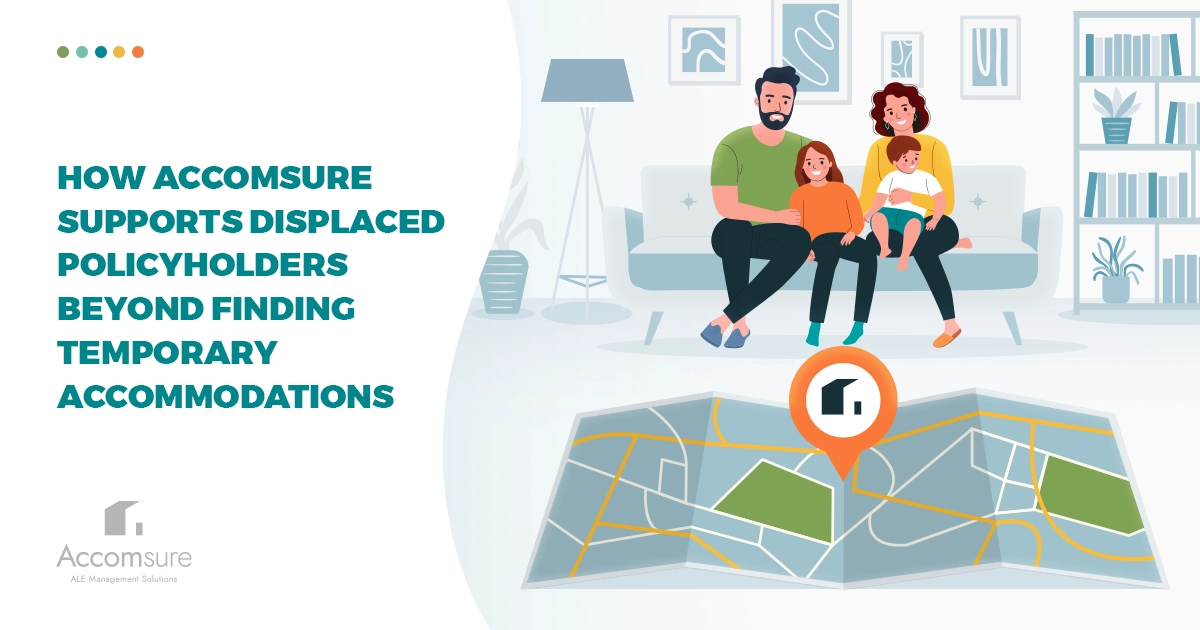While holiday mishaps are a common trope in your favourite Christmas movies, they’re all too common in the real world as well. While the holidays are meant to be full of Christmas festivities and cheer, some of our favourite holiday traditions can actually drive up holiday home insurance claims.
In this blog post, we’re sharing a list of four common holiday traditions that increase the risk of home disasters, such as house fires, during the holiday season. These trends are especially troubling for policyholders and adjusters alike. They not only increase the number of holiday home insurance claims, but they may also displace policyholders from their homes during an already stressful time of year.
Live Christmas Trees

For many people, purchasing a live Christmas tree is an important holiday tradition to kick off the Christmas season. You go to the tree lot with your family, select the fullest, heartiest tree you can find, strap it to the roof of your car, and bring it home to decorate with a cup of hot cocoa and your favourite Christmas movie.
Unfortunately, live Christmas trees are a leading cause of house fires during the holiday season. Each year, live Christmas trees result in more than $14 million of property damage (lckinsurance). Christmas tree fires also tend to have a higher risk of death compared to other fires.
Reducing the Risk
One common trend that is reducing the risk of Christmas tree fires is the switch to artificial trees. Unlike live trees, fake Christmas trees do not dry out and create a fire risk. They’re also commonly manufactured with fire-retardant materials, making them a significantly safer option.
Due to nostalgia, many people still choose to go for live Christmas trees rather than their artificial counterparts. In order to reduce the risk of fire without giving up a tradition, live Christmas trees should be watered every day and removed after December 31st. Consider sending a reminder to your policyholders so they are equipped with the information they need to reduce their Christmas tree fire risk.
Flammable Decorations
Christmas lights and tinsel bring a festive touch to any holiday home decorating project. Maybe you use string lights to decorate the outside of your house or maybe you use Christmas lights and tinsel to decorate your Christmas tree.
Many people are unaware that these decorations actually pose a significant fire risk. Traditional lights operate at a high voltage which causes them to generate heat. Tinsel is made from PVC, which is a highly flammable material. Once lit, it can burst into flames in seconds. This is why the combination of tinsel and traditional lights on a Christmas tree is particularly dangerous.
Reducing the Risk
Though Christmas lights are still a staple of the holiday season, tinsel is becoming less popular over the years. It’s difficult to clean up and has a history of adverse health effects, which has caused many people to opt for different holiday decorations instead.
While Christmas lights are still a popular holiday decoration, many people are opting for LED lights to reduce fire risk. LED lights operate at a lower voltage and generate less heat, which makes them a safer alternative.
Those who still choose to use tinsel and traditional Christmas lights can minimize their risk by keeping these two decorations separate and keeping tinsel away from other sources of heat such as heaters or fires.
Cooking Holiday Meals

Another common holiday tradition is cooking large meals at home. Many family members may join in the kitchen to cook elaborate Christmas dinners including turkey and a wide assortment of side dishes.
Unfortunately, busy kitchens may cause people to become distracted from their cooking tasks at hand. An unattended stovetop or an overcooked side dish could result in a kitchen fire.
Reducing the Risk
Due to COVID-19, it is very likely that Christmas and holiday gatherings will be significantly smaller than in previous years. We estimate that this will result in a slight reduction in the number of cooking fires compared to previous years. People may choose to cook less elaborate meals for fewer people and may experience fewer distractions while they are cooking, both of which reduce the risk of fires.
Candles
Many people use candles during Christmas to create a holiday ambiance. Whether it’s holiday scented candles or even candles on the Christmas tree, candles are another popular holiday staple.
Candles are one of the most obvious fire risks during the holidays. The open flames can easily light holiday decorations or other household objects on fire. With this in mind, it’s no surprise that candles cause 8% of Christmas tree fires (lckinsurance). However, candles are still widely used during the holiday season. In fact, Christmas, New Year’s Day and New Year’s Eve are the top three days for home fires caused by candles (lckinsurance).
Reducing the Risk
LED candles are a new trend that could help to reduce the risk of candle house fires. However, most avid candle lovers still choose traditional candles regardless of the greater risk of fire.
For those who can’t go without the traditional open flame, candles should never be left unattended and should be kept away from flammable materials (such as live Christmas trees) to minimize the risk.
When Holiday Mishaps Arise, Accomsure is Here to Help
Although there are various ways your policyholders can reduce their risk of house fires, holiday mishaps are still bound to happen. In some situations, this may leave your policyholders without a home or a place to spend the night for the holidays. While losing a home is always extremely disappointing, this can be especially troublesome for your policyholders during the holiday season.
Accomsure is here to help your policyholders through this difficult time. We help to reduce their stress and make the process of finding temporary accommodation as easy and as simple as possible. This allows you to focus on applying your expertise to their home insurance claim.
Submit a claim through our website, email or by calling us at 1.888.212.5815.




